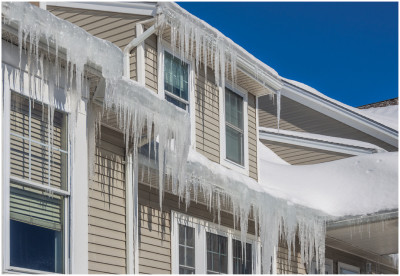Winter is here and if you haven’t already, you need to take a few steps to ensure your home is protected and ready for the winter elements. Here are a few tips on how to winterize your home on a budget.
- Clean Your Gutters: Making sure that water can flow freely through your gutters will help prevent icicles and ice dams from forming when the snow and ice hit.

- Flush the Water Heater: Particles and sediment can collect over time in the bottom of your water heater, making it inefficient. Flush the water through the drain valve to clear out the material and keep your heater functioning at its best.
- Clockwise Ceiling Fans: Ceiling fans are everyone’s favorite summer budget-saver. Did you know they can help out in the winter as well? Have your ceiling fans move in a clockwise direction so they push hot air along the ceiling towards the floor. If they’re going counterclockwise, they won’t be as effective.
- Replace Filters: Changing the filters in your central air and heating system regularly can significantly improve its efficiency, while easing the pressure on your wallet.
- Window Insulation Film: This may not be the prettiest, but window insulation film can keep up to 70% of your heat from leaking out of windows.
- Draft Guards: Draft guards can help save heat from escaping under the door.
- Weatherstrip Tape: Drafts and air leaks increase your heating costs. Make sure your windows and doors are sealed tight with weatherstripping. Simple, easy, and smart.
- Fiberglass Insulation: For the best heat retention, pack fiberglass insulation around basement doors, windows in unused rooms, and window AC units. Make sure your attic floor is insulated, too. Remember to be careful if you are installing it yourself and be sure to wear gloves.
- Programmable Thermostat: The US Department of Energy says you can save as much as 1% on your energy bill for every degree you lower your home’s temperature during the winter. Install a programmable thermostat now and save money by keeping the temp down when you’re not at home.
- Caulking: If there are any remaining gaps in siding, windows, or doors, fill those spaces with caulk. For windows that seem to be extra drafty, caulk the inside too, pulling off moldings to fill all gaps in the insulation.






